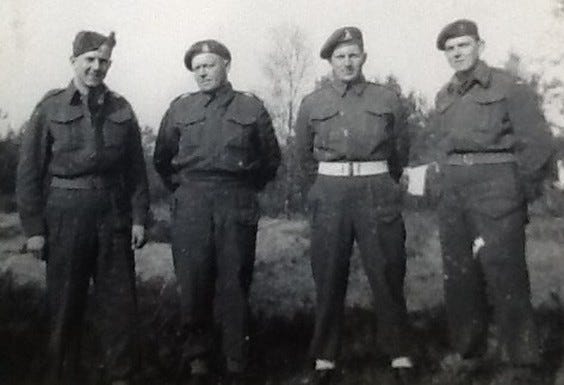One of my favourite projects from the 17 years I spent at the Ottawa Citizen came to an end today, as a Twitter policy change on automated accounts has knocked out the @WeAreTheDead memorial to Canadians lost in military service.
The idea for @WeAreTheDead was born in October 2011, when the Citizen was looking for new ways to engage readers digitally. A few weeks earlier I had obtained a copy of the Veteran Affairs database of Canadians who died during their military service. I suggested to Citizen editor Andrew Potter that we find a way to share this through social media.
With Remembrance Day approaching, Potter liked the idea of a memorial that would sustain itself online. As he put it, our remembrance of those who lost their lives in service to Canada should not be confined to just one day or one hour. It should be an ongoing act.
We decided to create a Twitter ‘bot that would automatically tweet out one name, randomly selected from the more than 119,000 in the database, every hour, on the hour.
A few months earlier, I was learning to write code using Twitter’s API (advanced programming interface), that allows automated accounts to tweet updates on a schedule. For fun, I wrote a small program that tweeted out randomly-selected hourly quotes from British director Bruce Robinson’s brilliantly comic “Withnail and I” script. The Twitter account @Withailizer gained a small but devoted following of Withnail fans, mostly in the UK.
Adapting the code from @Withnailizer was relatively simple. We added a function that would calculate the age of the fallen Canadian Armed Forces member, where that data was available, and formatted it along with the name, rank, regiment, and the date and location of death.
Potter suggested a line from John McRae’s “In Flanders Field” as a title for the account. Unfortunately, the Twitter handle “WeAreTheDead” was already being used a young woman in Australia, as an homage to a goth metal band. I reached out to her and explained our idea for the memorial to Canadian soldiers. She graciously agreed to sign over the account name.
It launched at 11 minutes after 11 a.m, on November 11, 2011, and kept tweeting another name, every hour, until the list was complete — a project scheduled to take more than 13 years, ending sometime in June 2024.
We also decided to do something special for the launch: publish a profile of the CAF member who’s name was first tweeted. As the program selected the name from the database at random, we had no idea who it would be, or whether we’d be able to find any information about where they came from and how they died.
This was a bit of a journalistic leap of faith. We had committed to run a story in the next day’s paper, regardless of what we could find out.
The bot launched on schedule on the first morning and tweeted out the name of Leading Aircraftman Melvin Chancy Simpson, who died in July 1944, a few weeks after D-Day, as the Royal Canadian Airforce fought in the skies over Europe
As we researched his life, we learned that Simpson did not die in battle or anywhere near a front line. He passed from a stomach cancer in hospital in Nova Scotia. A sad death for a 24-year-old married man, but not what we had expected when we conceived the idea profiling a Canadian combat hero.
The project continued every year and generated more profiles of Canadian soldiers, aviators and sailors killed in the line of duty. A Saskatchewan farmer who perished at Vimy Ridge. A bricklayer from Winnipeg lost in the carnage of Ypres. A member of the Provost Corps. who stepped on a live wire in England. And, in the most compelling instalment to date, a dashing pilot from Edmonton who crashed over the English channel but left a fleeting appearance in a recruiting film clip and an unborn daughter he never met.
We used enlistment papers, war diaries, newspaper clippings, census records and other sources to pull together these profiles on deadline. We were aided by crowdsourcing the project on Twitter, drawing help from genealogists, professional and amateur, who joined in our search for information about these lives cut too short.
When I left the Citizen, the project was taken over by reporters David Reevely, Blair Crawford and Andrew Duffy and editor Drake Fenton. They elevated it into a once-a-year showcase of investigative journalism and historical research. They tracked down and interviewed surviving relatives, dug up photographs to put faces to the dead, and wrote compelling stories those who were lost and how they died.
Although those profiled were all heroic in their own ways, they were not all combat heroes of the conventional kind. They were everyday Canadians who interrupted their lives and signed up to defend their country. They did what we asked them to do, and lost their lives because of it, leaving behind brothers and sisters, mothers and fathers, wives and girlfriends, and sons and daughters to carry on their memories.
With Twitter’s change to its policy on automated account, @WeAreTheDead was determined to have violated the terms of service and access to the API that it needs to continue cut off. The bot still had about a year’s worth of names to tweet. I’m hoping to port it over to another platform to keep it alive.
I’ll update you when I can find a new home. Suggestions welcomed at glenmcgregorYOW@gmail.com.





